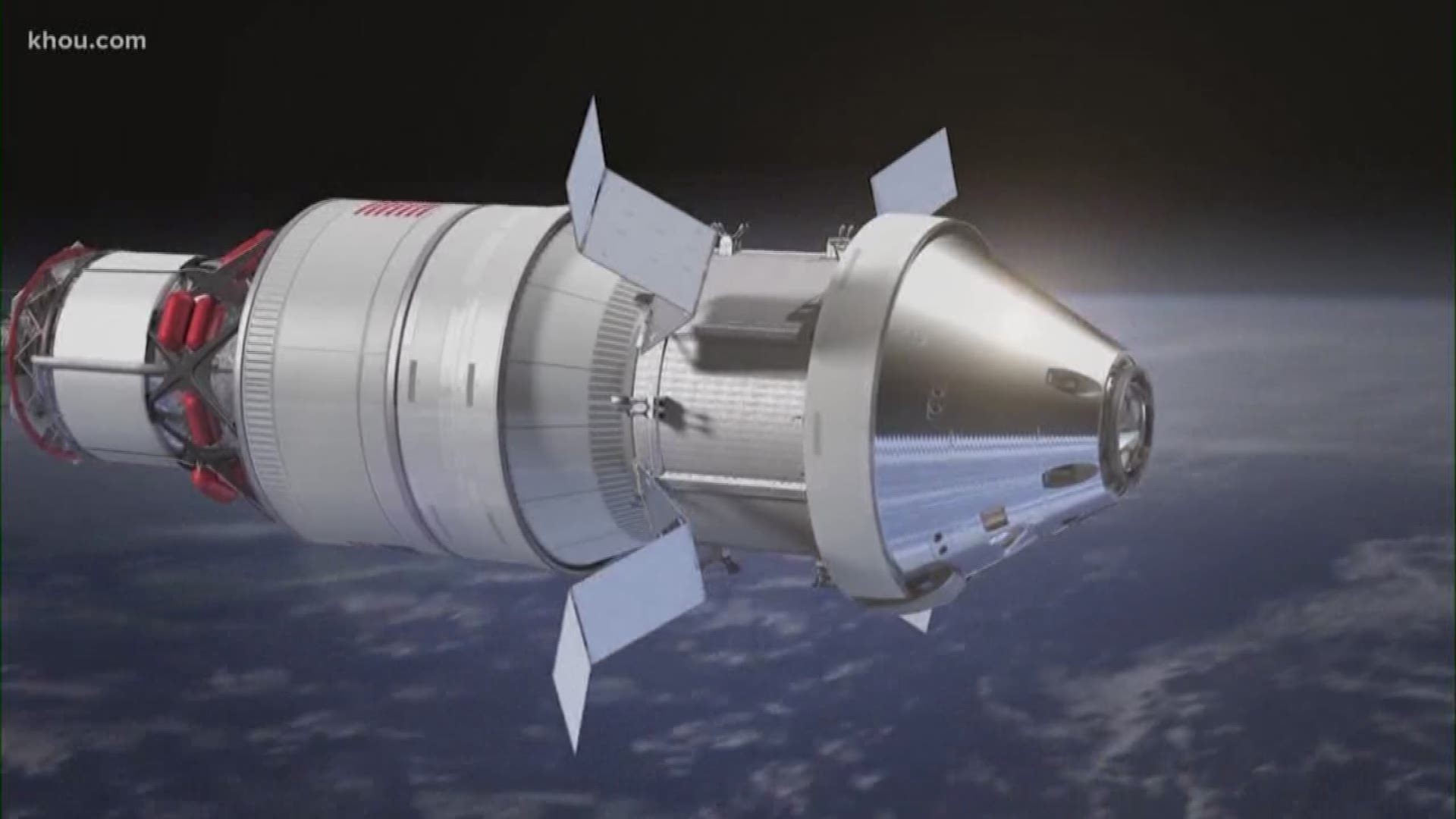HOUSTON — Editor's note: The above video ran in a previous story.
NASA took the next giant leap toward its future Monday when it announced an Artemis mission that will carry the first woman and the next man to the moon by 2024.
The Artemis program is the next step in human space exploration. It’s part of NASA’s broader Moon to Mars exploration approach, in which we will quickly and sustainably explore the Moon and use what we learn there to enable sending astronauts to Mars.
The agency is ramping up its Orion production line to support a minimum of six and a maximum of 12 spacecraft by 2030.
Spacecraft production for the Orion program will be managed at the Johnson Space Center in Houston.
RELATED: Our galaxy's black hole suddenly flashed a bright light — and scientists don't know exactly why
“The men and women at Johnson Space Center represent the best and brightest scientific minds, and I’m confident with additional Orion spacecraft they will push the limits of exploration to the Moon and beyond,” said Sen. John Cornyn of Texas. “I commend the Trump Administration for recognizing the importance and tradition of Houston as the center of human spaceflight and exploring the next frontier.”
“This is a great day for the men and women at Johnson Space Center. They are crucial to our national space program and have an undeniable legacy and record of success in advancing America’s leadership in the human exploration of space,” said Sen. Ted Cruz of Texas.
The agency has awarded the Orion Production and Operations Contract (OPOC) to Lockheed Martin of Littleton, Colorado.
“This contract secures Orion production through the next decade, demonstrating NASA’s commitment to establishing a sustainable presence at the Moon to bring back new knowledge and prepare for sending astronauts to Mars,” said NASA Administrator Jim Bridenstine. “Orion is a highly-capable, state-of-the-art spacecraft, designed specifically for deep space missions with astronauts, and an integral part of NASA’s infrastructure for Artemis missions and future exploration of the solar system.”
With this award, NASA is ordering three more Orion spacecraft for Artemis missions III through V for $2.7 billion.
The agency plans to order three additional Orion capsules in fiscal year 2022 for Artemis missions VI through VIII, at a total of $1.9 billion.
Ordering the spacecraft in groups of three allows NASA to benefit from efficiencies that become available in the supply chain over time – efficiencies that optimize production and lower costs.
The long-term plan is to reuse the recovered crew modules at least once. The first phase of reusability will start with Artemis II. Interior components of the spacecraft, such as flight computers and other high value electronics, as well as crew seats and switch panels, will be re-flown on Artemis V. The Artemis III crew module will be re-flown on Artemis VI.
Spacecraft reusability – itself a significant cost saver for the agency – will help NASA build the capabilities for sustainable exploration at the Moon and beyond.
“As the only vehicle capable of deep space exploration, the Orion spacecraft is critical to America’s continued leadership,” said Rep. Brian Babin of Texas. “Without the brilliant minds and extraordinary leadership of the hard-working men and women at Johnson, our country would not be the preeminent spacefaring nation in the world.”
Houston has long been the hub of America’s human space exploration program, from the early days of Gemini, Mercury, and Apollo to Artemis. With NASA’s accelerated return to the Moon, Johnson Space Center now is managing more major human spaceflight programs than ever before. In addition to the Orion program, the Texas facility also manages NASA’s Gateway and International Space Station programs, and is home to the Mission Control Center and America’s astronaut corps – the next moonwalkers.
Johnson also manages the agency’s Commercial Lunar Payload Services, the first two deliveries for which are targeted to launch to the Moon in July 2021.
“No other spacecraft in the world can keep humans alive hundreds of thousands of miles from Earth for weeks at a time with the safety features, crew accommodations, technical innovations, and reliability that Orion provides,” said Mark Kirasich, Orion Program manager at Johnson. “With the design and development phase of Orion largely behind us, this new contract will enable us to increase efficiencies, reuse the spacecraft, and bring down the cost of reliably transporting people between earth and the Gateway.”
Work is already underway on both the Artemis I and II Orion spacecraft. Engineers at Kennedy Space Center in Florida have completed and attached the crew and service modules for Artemis I and are preparing the spacecraft for environmental testing.
Meanwhile, teams at Kennedy are integrating thousands of parts into the crew module for Artemis II in preparation for the first crewed Artemis mission.
ALSO POPULAR ON KHOU.COM

